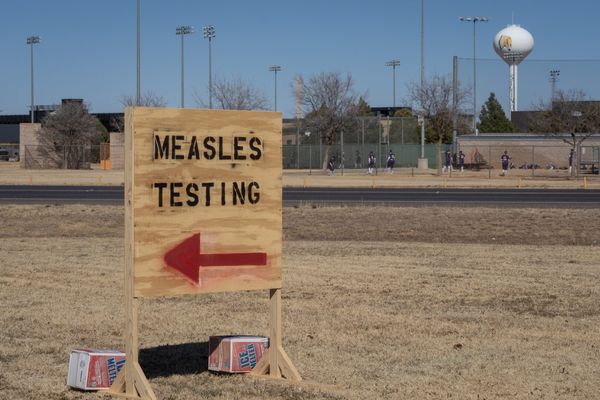
A prolific tornado outbreak will give way to a rare and widespread flooding threat across the midwest and southern US this week, stressing the nation’s short-staffed weather forecasting and disaster response efforts.
At least seven people have reportedly died so far as nearly 100 tornadoes struck on Wednesday.
A critically short-staffed National Weather Service (NWS) appeared to issue a near-record number of tornado warnings for a single day. The combined 284 tornado warnings issued on Wednesday was exceeded only by April 2011, the biggest tornado outbreak in modern records. At times, there were so many tornado warnings that they formed a nearly continuous line stretching nearly 1,000 miles from Arkansas to Michigan.
The cold front that helped spark Wednesday’s tornadoes will slow down over the next few days, causing lines of thunderstorms to stall near the confluence of the Ohio and Mississippi rivers creating a “life-threatening, catastrophic, and potentially historic flash flood event”, according to the NWS.
Rainfall near Memphis, Tennessee, is expected to exceed 12in over the next three days, a total that is expected to recur less than once in a thousand years under a stable climate, according to a Guardian analysis of available forecast data.
According to a NWS forecast bulletin: “Communities in the region should prepare for possible long duration and severe disruptions to daily life.”
In southern Illinois, the Ohio River is predicted to crest at 47ft this weekend – the fifth-highest level in the past 25 years. Near-record flooding is also expected on smaller streams and rivers from eastern Arkansas to southern Ohio.
To make matters worse, the flooding will occur in many of the same regions affected by Wednesday’s tornadoes.
Several of Wednesday’s tornadoes appeared to be near the high end of wind speed and damage. An especially strong tornado that struck near Jonesboro, Arkansas, had radar-estimated winds near 200mph. Storm chasers shared videos of nighttime search and rescue operations in western Tennessee where multiple tornadoes passed through the same areas throughout the evening. In Indianapolis, an airline passenger shared video of strong winds shaking their plane after touching down safely. Those in the path of the storms reported getting little sleep as warning sirens and automated mobile phone alerts repeatedly sounded.
At one point, a tornado-producing thunderstorm passed nearly directly over an NWS office in Kentucky – which hasn’t been able to fix its office bathroom due to funding restrictions.
“They have worked multiple tornado events this spring already and their office doesn’t even have functioning toilets!” wrote a fellow NWS employee on social media.
The Federal Emergency Management Agency, which Donald Trump is attempting to overhaul, recently fired hundreds of its probationary staff after being ordered to do so by the White House. It is likely that the response to this week’s flooding and tornadoes will outstrip the ability of rural regions in Arkansas, Missouri, Tennessee, Kentucky and southern Illinois to manage on their own.
The nationwide network of River Forecast Centers – operated by Noaa – have been especially hard hit by staffing cuts with five of the 12 offices currently having critical vacancies. This week’s heavy rains will be yet another example of how extreme weather is testing the increasingly weakened agency.
Extremely heavy early spring rains is one of the best-predicted consequences of climate change, and data show that rains are intensifying at one of the fastest rates in the Ohio Valley.
Eric Holthaus is a meteorologist and climate journalist based in Minnesota







